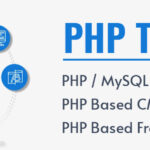
Node.js is an open-source JavaScript runtime cross-platform environment that executes JavaScript code outside a browser. Typically, JavaScript is used primarily for client-side scripting, in which scripts written in JavaScript are embedded in a webpage’s HTML and run client-side by a JavaScript engine in the user’s web browser.
Node.js lets developers use JavaScript to write Command Line tools and for running scripts server-side to produce dynamic web page content before the page is sent to the user’s web browser.
Introduction to Node JS
- What is Node JS?
- Advantages of Node JS
- Node.js Process Model
- Traditional Web Server Model
Setup Dev Environment
- Install Node.js on Windows
- Node JS Console
Node JS Modules
- Functions
- Buffer
- Module
- Module Types
- Core Modules
- Local Modules
- Module.Exports
Node Package Manager
- What is NPM
- Installing Packages Locally
- Adding a dependency in package.json
- Installing packages globally
- Updating packages
Creating Web server
- Creating web server
- Handling http requests
- Sending requests
File System
- Fs.readFile
- Writing a File
- Writing a file asynchronously
- Opening a file
- Deleting a file
- Other IO Operations
Debugging Node JS Application
- Core Node JS debugger
- Debugging with Visual Studio
Events
- EventEmitter class
- Returning event emitter
- Inhering events
Database connectivity
- Connection string
- Configuring
- Working with the select command
- Updating records
- Deleting records

































Recent Comments